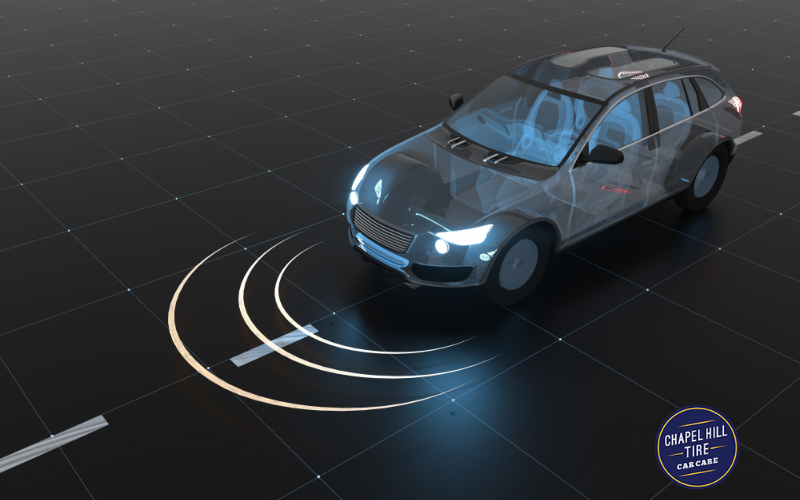How Cold Weather Affects Your Car’s Transmission
Auto Shops Located in: Chapel Hill, Durham, Taleigh, Apex, and Cary North Carolina

With temperatures dropping, it’s an important time of year to ensure you’re on top of your vehicle’s winter maintenance. When you think of issues that your car may have in the ice and snow, tires and suspension are potentially where your mind goes initially due to sliding hazards, but your vehicle’s transmission can also be affected by the cold.
As you prepare your car for cold weather, you should know how lower temps can affect your transmission, the main signs that your transmission may be experiencing problems, and the steps you can take to ensure that your transmission is in tip-top shape.
The Two Ways Cold Weather Can Impact a Vehicle’s Transmission
Two major ways cold weather can cause problems in your vehicle’s transmission are contracting components due to lower temperatures and the thickening of transmission fluids. Learn more about how cold weather can affect your vehicle’s transmission below:
- Contracting Components: Icy temperatures can cause components in your vehicle’s transmission to contract. Rubber parts such as seals are especially vulnerable to this type of damage, and while the damage may not be apparent at first, the wear and tear will eventually cause major issues. Even the smallest amount of contraction can cause gaps between transmission components, allowing water to get in and rust your components. The water can also freeze and expand, causing major damage to your transmission and costing you thousands.
- Thickening of Transmission Fluid: Transmission fluids become thicker in the cold, causing them to flow less smoothly throughout your vehicle’s system. Viscous transmission fluid can lead to shifting gears and increased friction, which can cause wear and tear on your car’s transmission system.
4 Signs of Transmission Issues in Cold Weather
Getting on top of transmission issues before they get out of hand will save you money in the long run. Be sure to keep your eyes and ears out for the following four signs that your car may be having transmission problems in the winter:
- Delayed or Rough Shifting: If you’ve noticed that your car is taking longer to change gears or you are feeling a rough series of jolts when it does, your vehicle’s transmission is likely having problems.
- Whining or Grinding Noises: Any type of grinding or whining while changing gears is a major indicator that the transmission in your car needs a repair. There shouldn’t be any kind of auditory indicator that your car is changing gears, so if it’s cold outside and you’re hearing things when shifting, it’s time to take your car into an automotive shop near you. At the shop, a professional can diagnose whatever issues you’re having.
- Slipping Gears: If your car starts to change gears unexpectedly, it’s a major sign that the cold weather could be affecting your transmission. When your gears are shifting without warning or your transmission loses power, you should bring your car in to have it looked at to prevent further damage
- Warning Lights: Dashboard warning lights should never be ignored, especially when they’re related to your transmission. Every car owner should familiarize themselves with what the various lights on their dashboard indicate. If your transmission light turns on, you’ll want to get your transmission checked out as soon as possible to ensure the problem doesn’t become worse.
Potential Transmission Fixes
If your car needs work on its transmission due to cold weather, a mechanic can likely fix the issue for you. Learn more about the three main fixes that a mechanic may perform to get you back on the road:
- Transmission Fluid Change: A mechanic will check your car’s transmission fluids to make sure that they are at proper levels and are a good consistency. If they find that the transmission fluid is thick, discolored, or your levels are off, they will take the proper steps to ensure that these problems are addressed.
- Complete Transmission Flush: If your transmission fluid problems are severe enough, your car may need a complete flush of its transmission system to get rid of old, contaminated fluid.
- Cold Weather Additives: Your mechanic may recommend using transmission additives designed for cold weather issues. These additives will keep your transmission fluid at the proper consistency, allowing it to flow properly and preventing further thickening at lower temperatures.
- Part replacement: Sometimes, a transmission issue could be due to a broken down part. When a mechanic discovers a specific part is causing your issue, they’ll need to replace it.
- Transmission resealing: If a mechanic discovers your vehicle is leaking, they may need to seal any leaks they find. While mechanics can often just seal isolated leaks, they may need to fully reseal your transmission if you have too many leaks or an existing leak is difficult to find.
Choose Chapel Hill Tire for all of Your Transmission Needs
If you’re looking for a transmission shop in Chapel Hill, Durham, Raleigh, or the surrounding areas, choose Chapel Hill Tire. Whether you’re bringing your car in before holiday traveling to make sure it’s in good shape or after you’ve noticed signs that you may be having transmission problems, our mechanics can fully inspect your car’s system and make the fixes required to get it running smoothly again. Before you schedule an appointment, review our promotions to find a great deal on our many services!
Learn more about our transmission services today. When you’re ready to bring your car in, please make an appointment at one of our convenient locations in the Triangle Area.
We’ve got all your automotive repair needs covered.















